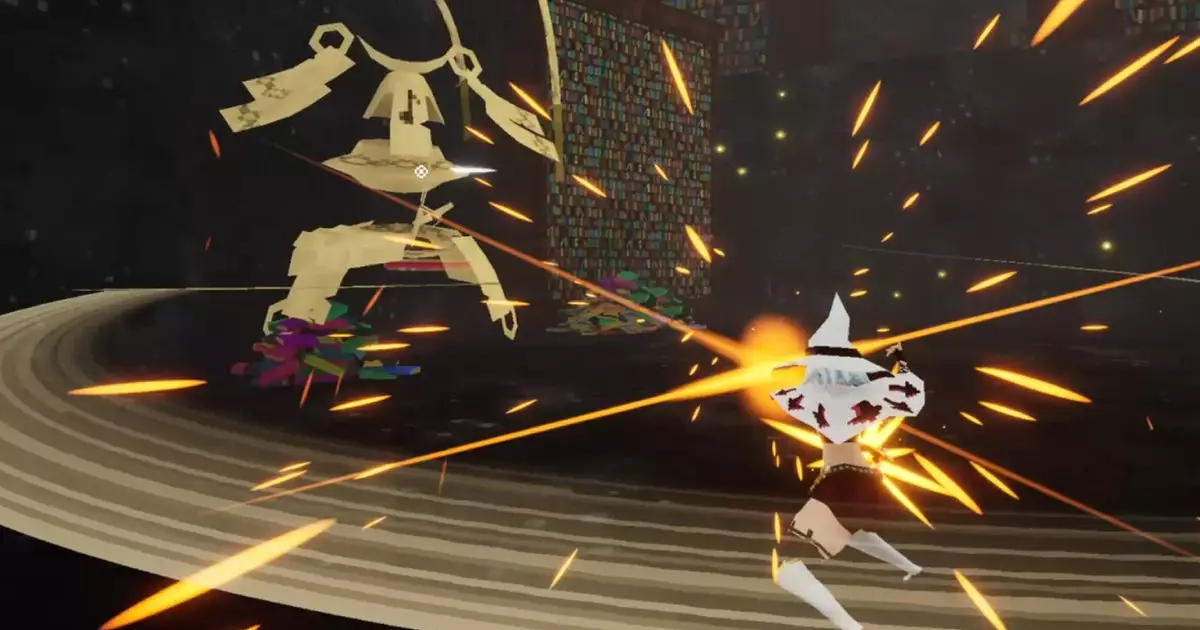For many gamers, certain titles loom large in memory. One such game is *Gravity Rush 2*, which captured the hearts of players with its whimsical storytelling, vibrant visuals, and gravity-defying mechanics. Eight years later, it remains a bittersweet reminder of unfulfilled potential, particularly amidst the quietude since its release. The yearning for a sequel has only grown stronger, leaving players like myself nostalgic for its unique exploration of class dynamics woven brilliantly into its narrative fabric. As I grapple with this nostalgia, a hopeful glimmer appears on the horizon: *Metro Gravity*, a newcomer that promises to rekindle that intoxicating sense of wonder.
A Fresh Take on Gravity Mechanics
At first glance, one might be tempted to compare *Metro Gravity* to its predecessor *Gravity Rush*, given the shared theme of gravity manipulation. However, *Metro Gravity* distinguishes itself through its innovative gameplay mechanics. While *Gravity Rush* allows players to freely navigate through a more liberated version of gravity, *Metro Gravity* opts for a locking mechanism where the protagonist can maintain gravity on any surface. This shift transforms the fundamental dynamic of movement, creating a more tactical approach to traversing environments. The ability to walk on walls and ceilings not only adds excitement but also an intriguing element of strategy, encouraging players to think outside the sequential paths typical of platformers.
Rhythm Meets Combat
One of the standout features of *Metro Gravity* is its unique combat system, which cleverly intertwines rhythm with action. Enemies attack to a beat that dynamically syncs with the music, challenging players to find their rhythm amidst the chaos. It’s reminiscent of the way sound can elevate the stakes in a dance-off; the gameplay becomes as much about syncing with the audio as it is about strategic dodging and attacking. Moreover, the introduction of parry mechanics echoes the intensity of games like *Sekiro*, enhancing the depth of combat with an additional layer of challenge. This artistic blending of audio cues and combat timing elevates the experience, allowing players to feel a connection with the game that goes beyond mere reflex.
Navigating a 3D Metroidvania
The term Metroidvania often conjures images of traversing lush 2D landscapes. However, *Metro Gravity* challenges this notion by bringing the genre into a 3D realm. Navigating through three-dimensional space while walking on various surfaces could have resulted in a disorienting experience, but the game’s design cleverly circumvents confusion. By integrating detailed maps that highlight distinct aesthetics and atmospheres, players can easily orient themselves within the game’s diverse environments. The various vibes, coupled with eclectic musical scores, enhance the immersion, making each area feel alive and inviting exploration.
Anticipating a Welcoming Community Response
As the gaming community welcomes *Metro Gravity*, a fresh player-base will hopefully arise, buoyed by curiosity and the need for new experiences. With its unique premise and engaging mechanics, it has the potential to bridge classic platforming gameplay with modern expectations. For those, like me, who lament the absence of innovative 3D metroidvanias, *Metro Gravity* is a beacon of hope. It offers the chance to transcend the limitations of genre conventions, beckoning players to shift their perspectives and embrace a new adventure.
While there is nostalgia for *Gravity Rush 2*, this new entry into the gravity-shifting genre signifies a promising step forward. It invites players to once again experience that breathtaking sensation of flight—albeit in a refreshing, distorted reality. With its launch on Steam, the opportunity to dive into this colorful universe awaits, and I cannot help but feel a rush of excitement at the thought of exploring every nook and cranny of its vibrant world.

